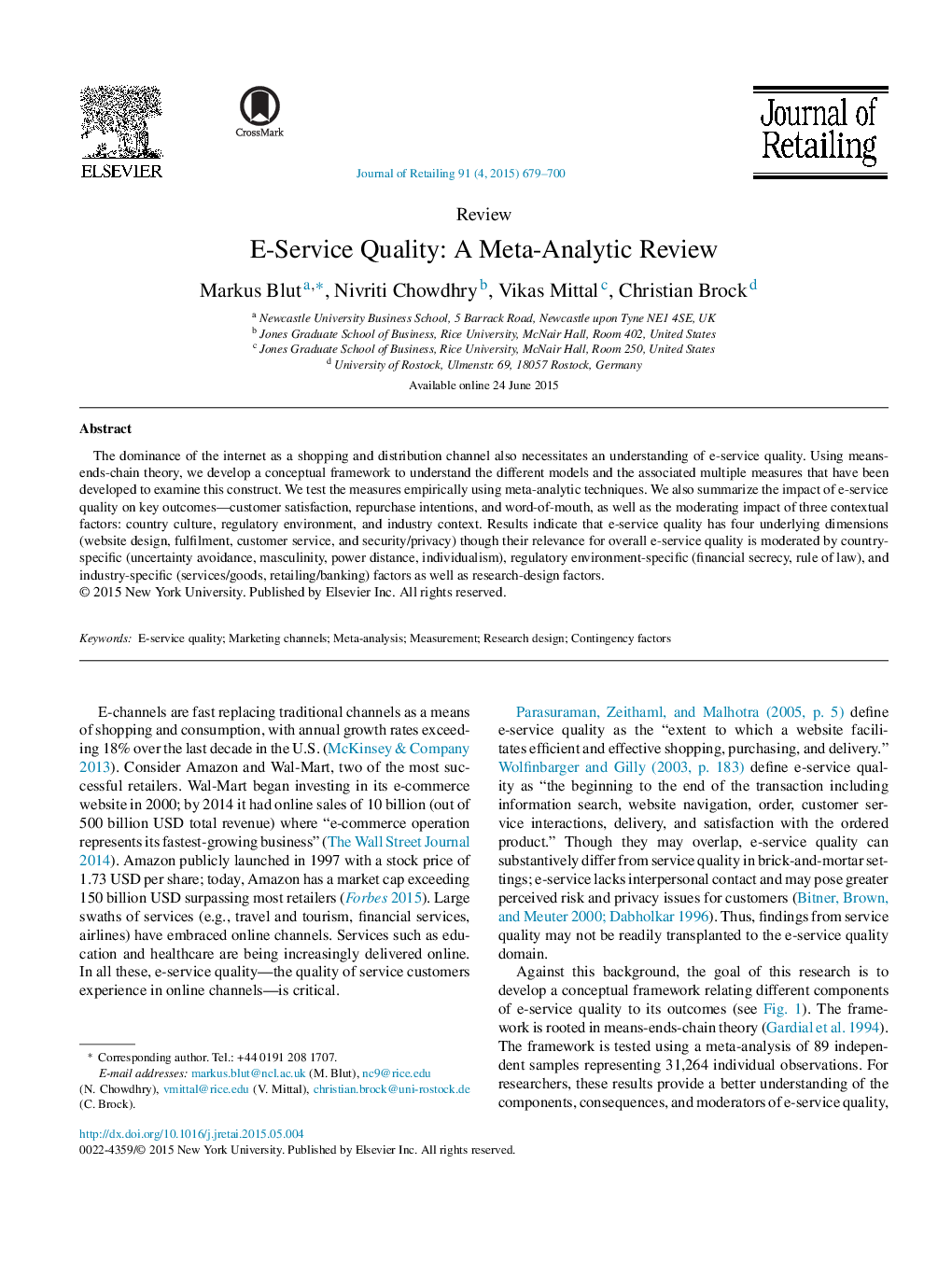| Article ID | Journal | Published Year | Pages | File Type |
|---|---|---|---|---|
| 886253 | Journal of Retailing | 2015 | 22 Pages |
•E-service quality should be measured with an instrument including sixteen attributes.•Testing two rival models shows that a four-dimension model outperforms a six-dimension model.•E-service quality is moderated by country culture, regulatory environment, and industry context factors.•Using experiments, cross-sectional data, or panel data is acceptable.•We clarify measurement issues, sampling issues, and issues regarding potential co-variates.
The dominance of the internet as a shopping and distribution channel also necessitates an understanding of e-service quality. Using means-ends-chain theory, we develop a conceptual framework to understand the different models and the associated multiple measures that have been developed to examine this construct. We test the measures empirically using meta-analytic techniques. We also summarize the impact of e-service quality on key outcomes—customer satisfaction, repurchase intentions, and word-of-mouth, as well as the moderating impact of three contextual factors: country culture, regulatory environment, and industry context. Results indicate that e-service quality has four underlying dimensions (website design, fulfilment, customer service, and security/privacy) though their relevance for overall e-service quality is moderated by country-specific (uncertainty avoidance, masculinity, power distance, individualism), regulatory environment-specific (financial secrecy, rule of law), and industry-specific (services/goods, retailing/banking) factors as well as research-design factors.
Graphical abstractFigure optionsDownload full-size imageDownload as PowerPoint slide
